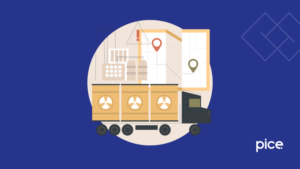What is Zero Rated Supply Under GST?
- 4 Oct 24
- 8 mins

What is Zero Rated Supply Under GST?
- What Are Zero-Rated Supplies?
- Examples of Zero-Rated Supplies
- What Is the Difference Between Zero-Rated and Tax-Exempt?
- Why Are Zero-Rated Supplies Important?
- Zero-Rated Supplies in the EU
- Does the Concept of Zero-Rated Supplies Exist in Sales Tax?
- Documentation and Recordkeeping for Nil or Zero-Rated Supplies
- Avoiding Errors and Discrepancies in Reporting Nil or Zero-Rated Supplies
- Concept of SEZs and Their Role in the Indian Economy
- Eligibility Criteria for Supplies to SEZs to be Considered Zero-Rated Supplies
- Advantages of Zero-Rated Supplies to SEZs
- Conclusion
Key Takeaways
- Zero-rated supplies are taxed at 0%, allowing input tax credit claims, unlike exempt supplies.
- Exempt vs. Zero-rated: Exempt supplies can’t claim tax credits, but zero-rated supplies can.
- Global Impact: Zero-rated supplies reduce costs for exporters, enhancing global competitiveness.
- SEZ Benefits: Zero-rated supplies to SEZs boost investment, job creation, and economic growth.
- Accurate Documentation is crucial for error-free reporting of zero-rated supplies under GST.
Zero-rated supplies are a crucial concept in the framework of Goods and Services Tax, made to boost exports and increase competitiveness in the global market. Unlike exempt supplies, zero-rated supplies are not exempted from the taxation of GST but the rate of tax applicable is zero.
Having proper knowledge of the concept of zero-rated supplies is vital for business as it can help to reduce the cost burden and increase savings significantly. In this blog, we will discuss zero-rated supply under GST, the distinction between exempt and zero-rated supplies and all other important aspects.
What Are Zero-Rated Supplies?

Zero-rated supplies are goods or services subject to a GST rate of 0%, meaning buyers are not required to pay any tax due to the zero-tax rate. At the same time, these are referred to as taxable supplies. Unlike exempt supplies, such supply of services or goods is subject to 0% GST. Exempt supplies do not attract any rate of tax, i.e., NIL rate and include non-taxable supply.
Since these are taxable supplies, the credit of inputs which has been made as payment on goods or services during purchase is deductible.
Examples of Zero-Rated Supplies
Zero-rated supplies are goods or services that are essential for an individual's overall well-being. Some examples of zero-rated supplies are:
- Wool, grain, livestock
- Sanitary products
- Children’s apparel
- Prescription medicines
- Essential groceries such as milk, bread, etc.
What Is the Difference Between Zero-Rated and Tax-Exempt?
Exempt supplies and zero-rated supplies differ at the point of input tax credit:
Zero-rated supplies are not taxable at the place where sales are made. However, you can make input tax credits and make deductions for the amount you have paid.
In exempt supplies, GST is not applicable as the supply is not taxable. You are not eligible to claim input tax credit.
Why Are Zero-Rated Supplies Important?
Zero-rated supplies are important for the following reasons:
- Public Welfare: Zero-rated supplies can be used for social promotion and welfare. For instance, these supplies in the education and healthcare sectors can improve literacy rates and public health.
- Boost in Economic Activities: These supplies decrease the cost burden which in turn boosts demand and economic activities like encouragement of trade.
- Reduction in Administrative Burden: Since there is no collection of GST on these supplies, there is a decrease in administrative burden. Exempt supplies require regular monitoring and tracking.
Zero-Rated Supplies in the EU
The categories of zero-rated supplies in the EU are:
- Intra-EU Supplies: Supplies of goods or services between EU members are zero-rated under various conditions. For instance, a sale transaction that is made to a business with VAT registration and in a different EU member country.
- Specific Food Items and Essentials: In certain EU countries, some food items like pharmaceutical products and water are zero-rated.
- Healthcare Services: Some medical equipment, basic healthcare services and dental care may come under zero-rated supplies.
- International Transportation: Zero-rated supplies are also services that are related to the transportation of passengers or commodities between nations. This can include transportation by air, railways and sea.
Does the Concept of Zero-Rated Supplies Exist in Sales Tax?

Sales tax is a direct consumption tax which is prevalent primarily in provinces of Canada and the United States of America. This tax applies to the final consumers so the tax is not applicable at every stage of the entire supply chain.
Some states exempt certain supplies from sales tax. These services are similar to zero-rated supplies like medical products and essential food. However, since sales tax deduction on purchase transactions is not applicable, there is no difference between zero-rated supplies and exempt supplies.
Therefore, the concept of zero-rated supplies does not exist in sales tax.
Documentation and Recordkeeping for Nil or Zero-Rated Supplies
Here is the documentation and recordkeeping that is needed for nil or zero-rated supplies:
- Invoices and purchase orders with accurate details are essential for every transaction of zero-rated supplies.
- Careful storage of the approval letters or other important documents related to Special Economic Zones is necessary for these supplies.
- The supplier needs to seek guidance from a professional tax advisor if he is in confusion about any details of these supplies.
- You must preserve multiple copies of the export documents, which include the Bill of Lading.
- You need to review and update the documents with proper scrutiny, confirming the accuracy of details and addressing all compliments.
Avoiding Errors and Discrepancies in Reporting Nil or Zero-Rated Supplies
Here’s how you can avoid errors and discrepancies in reporting nil or zero-rated supplies:
- Scrutiny: Scrutinise properly and check each document multiple times before entering the details in GSTR-1. Important details like tax invoice number, GSTIN, categorisation of NIL and zero-rated supplies must be free of errors.
- Maintain Documentation Process: It is important to maintain a documentation procedure to prevent the loss of any important documents. The Letters of Approval and all the supporting documents must be updated regularly with amendments.
- Learning process: The rules and regulation process of GST changes with time. Therefore, it is important to stay aware of the present laws. It will also help you file returns accurately and reduce any errors due to changes in GST regulations.
Concept of SEZs and Their Role in the Indian Economy
Supplies that are made to Special Economic Zones (SEZ) fall under the category of zero-rated supplies. Introduced in 2005, these areas in a country boost foreign investments, promote export supply, and increase employment opportunities. SEZs create healthy and equal competition in the global market. In India, there are Special Economic Zones in different sectors like manufacturing, pharmaceuticals, information technology, and biotechnology.
Eligibility Criteria for Supplies to SEZs to be Considered Zero-Rated Supplies
To qualify as zero-rated supplies, certain eligibility criteria must be met for goods or services provided to SEZs.
- Suppliers need to provide a Letter of Undertaking (LUT) to the tax authority
- The supplier needs to guarantee that the goods or services are put to the use of authorised operations
- The LUT serves as a bond of compliance with the regulations by the supplier
Advantages of Zero-Rated Supplies to SEZs

The advantages of supplies to Special Economic Zones are:
- GST Exemptions: Since GST does not apply to these services, it significantly reduces the cost burden on the SEZ developer/unit. This leads to an increase in investment, providing a level playing field, and increase in employment opportunities.
- Flow of Credit: These supplies allow for a smooth flow of credit. The supplier is eligible for availment of tax credit on inputs, input services and capital goods that you use for the supply of goods or services. Additionally, you can claim refund application on ITC payment on these supplies to SEZ or offset against GST liability.
Conclusion
Zero-rated supply under GST not only increases healthy competition in the global market but also ensures businesses can claim Input Tax Credits on these purchase transactions. These supplies help businesses improve cash flow, complying with GST regulations and creating an environment for economic growth.
💡If you want to streamline your payment and make GST payments, consider using the PICE App. Explore the PICE App today and take your business to new heights.



















